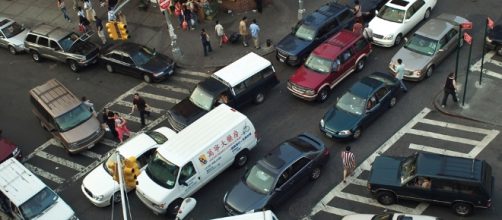Self-driving cars may help reduce the amount of gridlock on city highways and roads, according to researchers from the University of Illinois at Urbana-Champaign. Conducting experiments in Tucson, Arizona, the team found that even adding a single autonomous vehicle to the roads can significantly reduce traffic.
The research team comprised of researchers with expertise in engineering, transportation, cyber-physical systems, robotics, control theory and traffic flow theory programmed an autonomous car and mixed it among 20 human-driven cars. The team found out that a single self-driving car maintaining a constant speed can help human drivers tone down unnecessary accelerating and breaking.
It also helps cutting fuel consumption by up to 40 percent.
“Our experiments show that with as few as 5 percent of vehicles being automated and carefully controlled, we can eliminate stop-and-go waves caused by human driving behavior,” said Daniel B. Work, lead researcher in the study published Tuesday.
Human driving causes major traffic jams
Even without road disruptions, the lack of traffic signals, mergers or abrupt lane changes, the researchers found that human driving is the major cause of traffic jams. Human drivers have trouble maintaining a consistent speed, which leads to what the research team calls “phantom traffic jams.” autonomous cars, on the other hand, have the ability to maintain consistency, unless of course there’s a reason to either speed up or slow down.
While the conclusion of the research presents significant benefits to humanity, implementing it would take a while. For one, more research is needed to understand better the behavior of having both self-driving cars and human drivers on the same road. The number of autonomous cars will also become a huge factor, considering the technology had just been recently put to the test and was immediately met with a spate of accidents.
The solution to road congestion
Still, a road filled with self-driving cars seems likely the future we’re all headed. In fact, an estimated 10 million autonomous vehicles could be on the road by 2020, according to last year's report by BI Intelligence. Within three years, it’s possible that the busiest of cities will see a swarm of such cars and the conclusion of the recent experiment could materialize when that happens.
There’s a lot of room for improvement, though, and this can be done by replicating the experiment in other environments before self-driving cars be part of the norm. The plan is to continue this research by experimenting with denser traffics and more complicated roads that could involve even more perils and pitfalls, such as multiple lanes.


